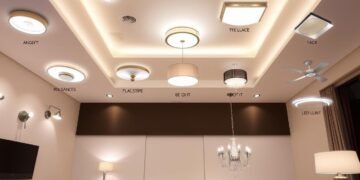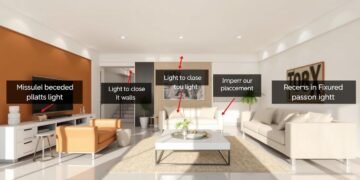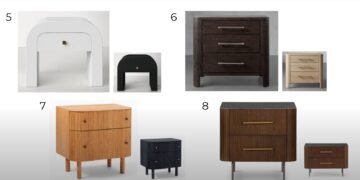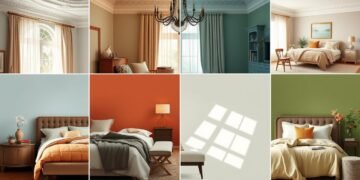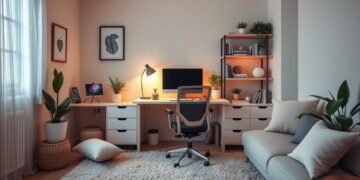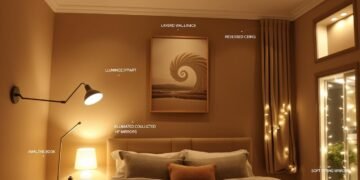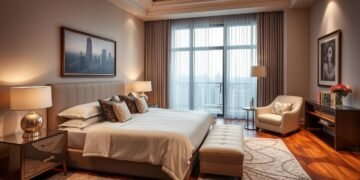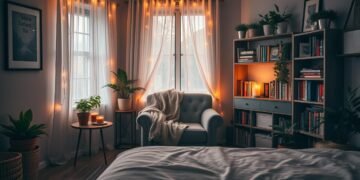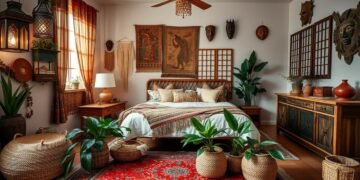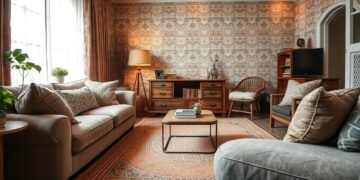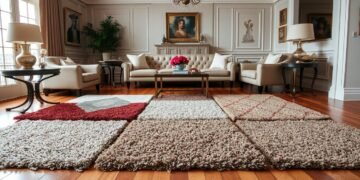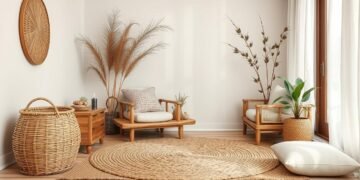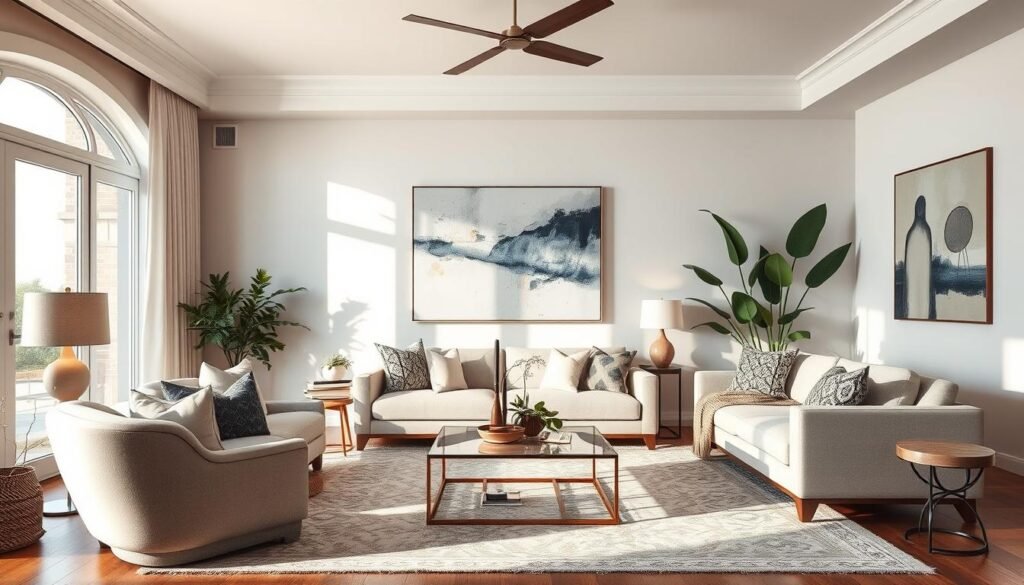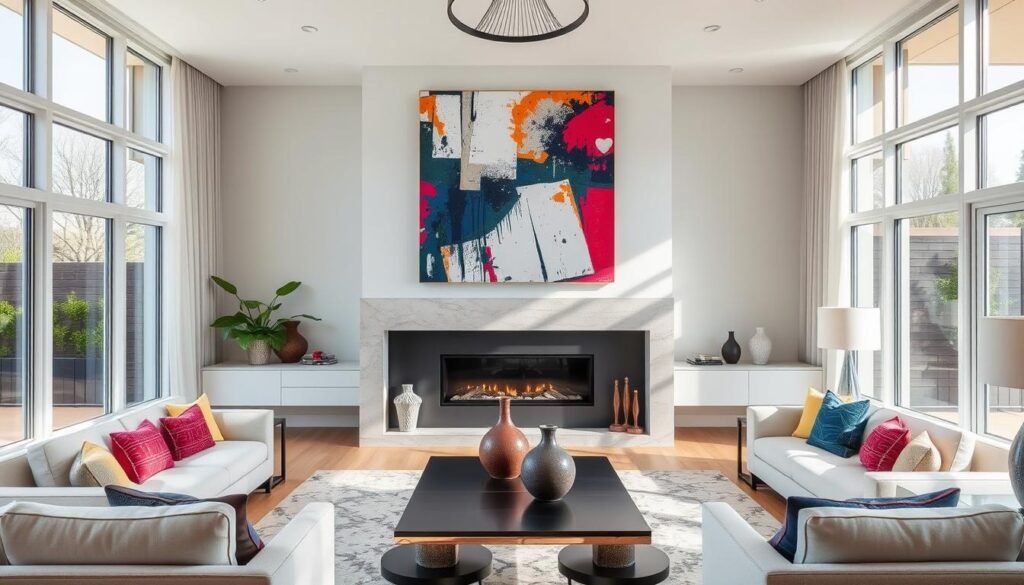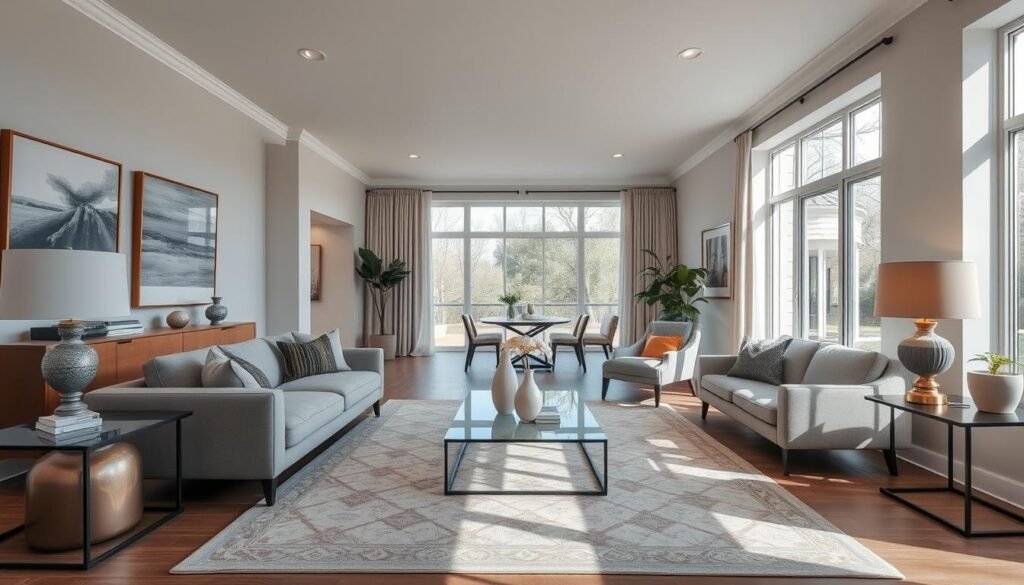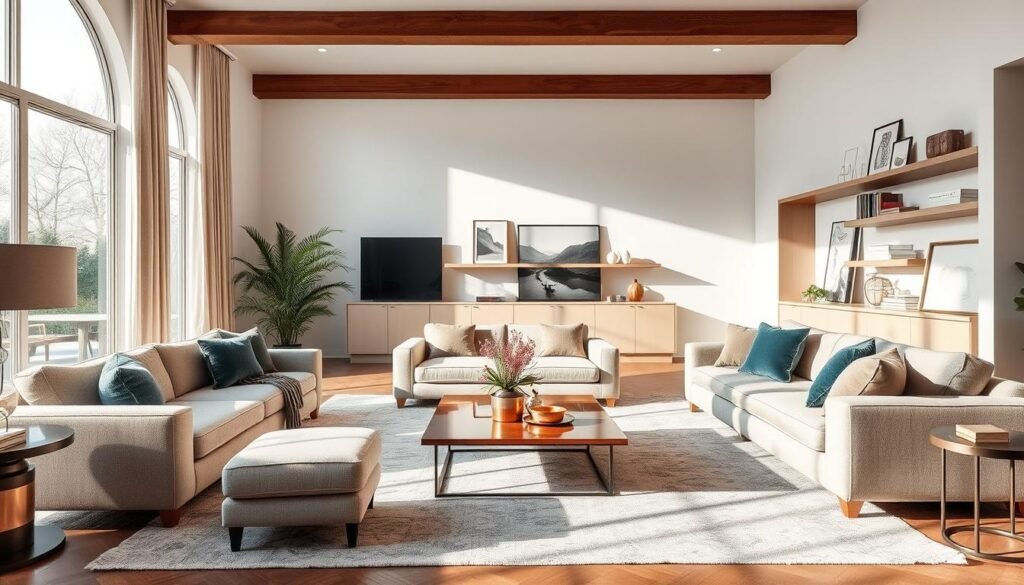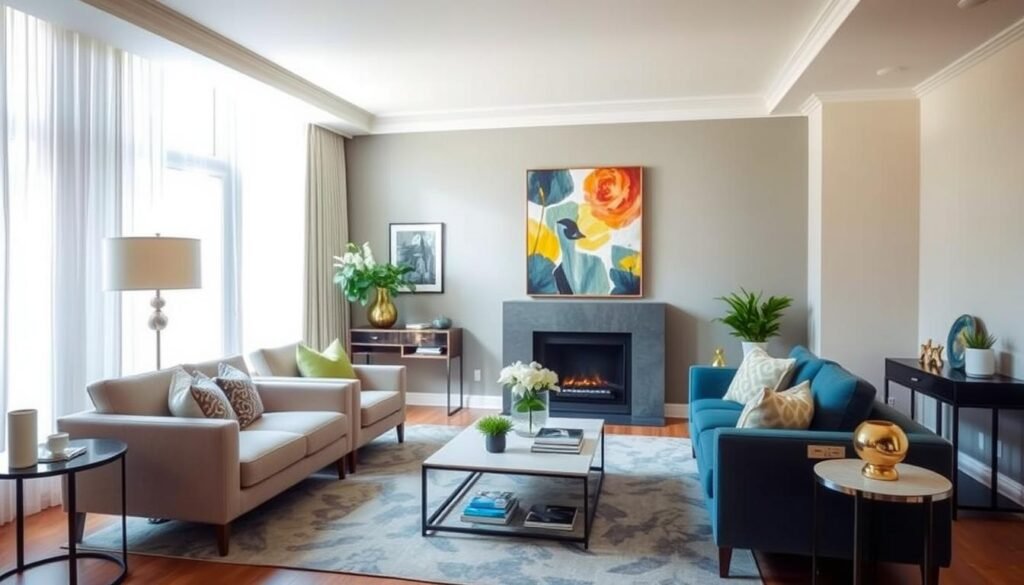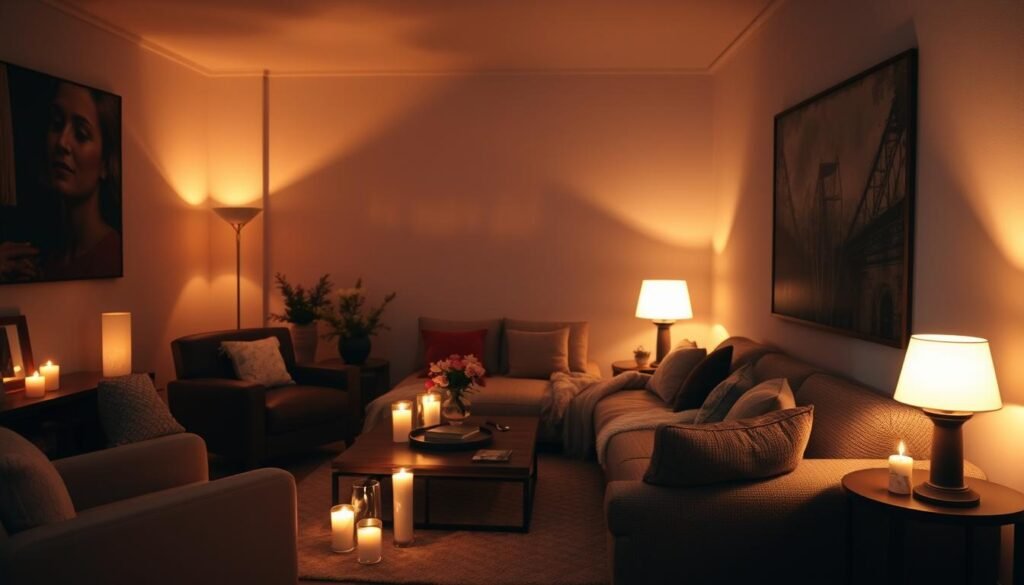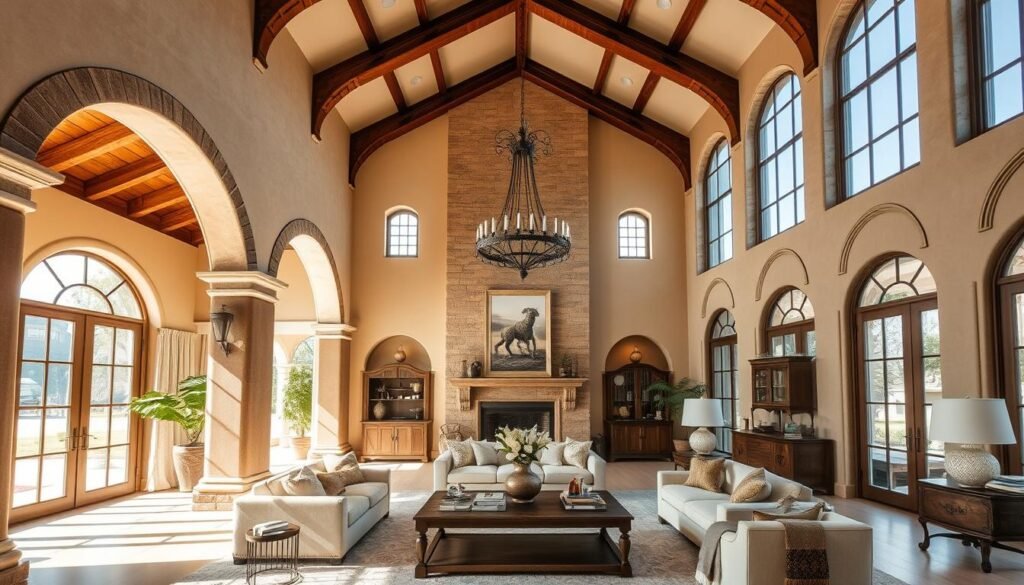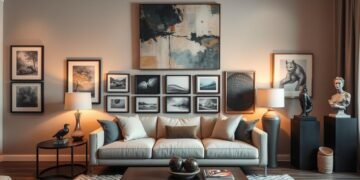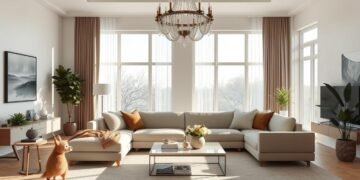Ever felt something was off in a room but couldn’t find what it was? That’s the power of scale, proportion, and focal points in design. Learning these can turn your home from ordinary to amazing.
Picture walking into a room where everything feels just right. The furniture fits well, colors match, and a standout feature catches your eye. This isn’t luck—it’s careful design that balances everything and brings order1.
Designing a great space is more than following trends. It’s about making a space that shows who you are, following timeless design rules. Mastering scale, proportion, and focal points lets you create spaces that look great and feel welcoming1.
Did you know items shouldn’t be taller than 13 times the height of what they sit on? Or that the golden ratio of 1:1.618 makes spaces look good? These tips can make your home décor better2.
As we explore these tips, you’ll learn how to make your home visually stunning. You’ll see how to pick the right furniture and create stunning focal points. Get ready to turn your home into a masterpiece of balance and beauty.
Key Takeaways
- Balance is key for a harmonious space
- Every room needs a clear focal point for purpose and attention
- Scale and proportion affect the room’s feel
- Color theory impacts mood and how we see space
- Proper lighting adds depth and interest
- The 60-30-10 rule helps balance colors
- Negative space is vital for visual rest and flow
Understanding the Fundamentals of Interior Design Balance
Balance is key in interior design, making spaces feel welcoming and in harmony. It’s about spreading out visual weight to get a balanced look. Mastering balance makes your space both beautiful and useful3.
Visual Weight Distribution in Room Design
Visual weight is how heavy objects seem in a room. Think about size, color, and texture to balance it out. Big, dark items weigh more than small, light ones. Mix heavy furniture with lighter pieces for a balanced look4.
Symmetrical vs Asymmetrical Balance
Symmetry makes a space feel formal and neat, with things mirrored on both sides. Asymmetry, though, uses different elements for balance. It brings life and interest to your space5.
The Rule of Thirds in Interior Layouts
The rule of thirds helps make layouts balanced and attractive. Imagine your space as a 3×3 grid. Place important items on lines or at corners. This helps place furniture and balance design elements5.
Don’t think everything must match perfectly for balance. Mixing furniture styles adds energy, but keep it to two or three styles. Also, consider furniture height and weight for a stable space4.
“Balance is not something you find, it’s something you create.”
Learning these basics will help you create balanced, beautiful interiors. They’ll show off your style and meet your needs.
Scale, Proportion & Focal Points in Decor: A Complete Guide
Understanding scale in interior design is key to creating spaces that look good together. Mastering proportion in interior design makes even small rooms feel big and lively6. Let’s dive into how to balance these elements in your home.
Room proportions are vital in design. Bad proportion can make furniture too big for a room or leave it feeling empty6. Knowing how scale affects comfort and mood in a room is important6.
Choosing the right furniture is important. Use furniture that fits your room’s size well. A good trick is to use neutral-colored furniture in a U-shape, with a comfy sofa and chairs around a glass table7. This setup helps balance scale and looks good together.
Focal points in decor are key to grounding a space. In small areas, like entryways, mix things like candelabras, a glass table, and flowers for interest without feeling too much7. In bigger rooms, big metallic wall art can keep things balanced and in proportion7.
| Room Type | Focal Point Ideas | Scale Considerations |
|---|---|---|
| Living Room | Fireplace, Large Artwork | 2/3 rule for furniture size |
| Dining Area | Chandelier, Statement Mirror | Table size proportional to room |
| Bedroom | Headboard, Window View | Bed size 25-30% of room area |
Using the right scale and proportion makes your design look good and feel nice6. By following these tips, you can make your space balanced and stylish, feeling both comfy and chic.
Creating Impactful Focal Points in Different Rooms
Focal points in decor are key in interior design. They guide the eye and add visual interest. They also set the tone for a space. Let’s see how to use them in different rooms.
Natural Focal Points vs Created Focal Points
Rooms often have natural focal points like fireplaces or large windows. In fact, 81% of designers say to use these features instead of making new ones8. If there’s no natural focal point, you can create one with statement furniture, artwork, or feature walls.
Using Artwork and Architectural Features
Artwork and architectural elements are great for focal points. 53% of art collectors use it to add personality8. Think about a big painting in your living room or a striking tile backsplash in your kitchen. Remember, a room should have only one focal point to avoid confusion9.
Strategic Lighting for Emphasis
Lighting can be a powerful focal point. 45% of designers use it to highlight areas8. A dramatic chandelier over a dining table or pendant lights above a kitchen island can be stunning. They also provide essential light.
| Room | Popular Focal Point Options |
|---|---|
| Living Room | Fireplace, Large Artwork, Statement Furniture |
| Bedroom | Statement Headboard, Accent Wall, Striking Lighting |
| Kitchen | Island, Unique Countertops, Open Shelving |
| Dining Room | Table Centerpiece, Chandelier, Accent Wall |
When designing, remember focal points improve both looks and function. They create balance and harmony9. Choose a feature wall, centerpiece, or statement furniture that fits your style and the room’s purpose for a great design.
Mastering Room Proportions and Space Planning
Understanding room proportions and space planning is key to creating balanced interiors. It’s about scale and proportion in design. This makes spaces feel both comfortable and welcoming10.
When planning your room layout, think about the dimensions. The size of your furniture greatly affects how a room feels. Choose furniture that fits your room’s scale for the best design balance10.
Using design principles like the rule of thirds can help a lot. This method divides your room into a 3×3 grid. It helps place furniture and accessories for a balanced look10.
Don’t forget about negative space in your design. Empty areas prevent overcrowding and highlight important pieces. This makes rooms feel bigger10. It’s great for open-concept spaces, where rugs or furniture groupings define areas.
Also, think about vertical space. Furniture and decor should match your ceiling height. This detail keeps your space looking cohesive and balanced.
By mastering these space planning techniques, you’ll make interiors that look good and work well for your lifestyle.
The Role of Furniture Scale in Design Harmony
Furniture scale is key to design harmony in your home. The right furniture sizes and room dimensions are essential. They make your space look good and work well.
Selecting Appropriately Sized Furniture
Choosing the right furniture size is important. In big rooms, use 60% large furniture for balance11. In small rooms, 80% should be modest to avoid clutter11. Think about each piece’s function and how it fits with others for harmony.
Furniture Placement Guidelines
Placing furniture right is key for comfort and looks. Make sure there’s enough room to move around. Don’t overcrowd or leave too much empty space12. A focal point is important, with 70% of designers saying it anchors the room11.
Working with Room Dimensions
Knowing your room’s size is important for furniture choice. Match furniture and decor with your room’s architecture12. In design, scale is key for harmony, with big rooms needing big furniture13.
| Room Size | Furniture Scale | Design Approach |
|---|---|---|
| Small | Modestly sized | Create openness with exposed legs |
| Large | Oversized pieces | Use groupings to fill space effectively |
| High ceilings | Taller pieces | Draw the eye upward |
Follow these tips for a balanced and beautiful living space. The secret is understanding furniture scale, room size, and design harmony.
Color Theory and Visual Balance in Interior Design
Color theory is key to achieving balance and harmony in your home. It helps you create spaces that look good together. A color wheel is great for finding colors that match well.
The 60-30-10 rule is a good guide for color in decor. Use 60% of a main color, 30% of a secondary color, and 10% as an accent. This makes your space look balanced and nice.
In a living room, for example, walls could be 60% neutral. Furniture might be 30% in a color that complements the main one. And, accessories could be 10% in a bold color.
Color contrast can make a room feel bigger and highlight certain areas. If your room has cool tones, add warm colors to balance it. This makes your design more interesting and adds depth.
Remember, scale and proportion are important in design. Scale is about the size of objects in a room. Proportion is how well objects fit together14.
By understanding color theory and balance, you can make spaces that feel welcoming. Try out different colors and proportions to find what suits your style and space best.
Lighting as a Tool for Scale and Proportion
Lighting is key in making your living spaces look right. It mixes ambient, task, and accent lighting for a balanced look. We’ll see how to use lighting to make your home look great.
Ambient Lighting Techniques
Ambient lighting is the base of your room’s light. Aim for 2-3 light sources in each room15. Use recessed can lights, cove lighting, and chandeliers for overall light16.
Warm light (2000K-3000K) makes spaces cozy. Cool light (4000K-5000K) gives a fresh feel17.
Task and Accent Lighting Placement
Task lighting focuses on specific areas. Put task lights over kitchen counters or desk lamps in offices16. Accent lighting brings out artwork or features, adding depth15.
Layer different lights in your room for balance. In living rooms, mix overhead lights with accent lamps or sconces15. Make sure light fixtures match your room size and decor17.
Natural Light Considerations
Natural light affects your health and sleep. Use windows and skylights to get its benefits17. Think about how natural light works with your artificial lighting.
Dimmer switches let you change light levels for mood or tasks15. This makes your space flexible and keeps your lighting in check.
Texture and Pattern: Adding Depth to Your Design
Texture and pattern bring life to your living spaces. They add visual interest and movement, making rooms feel alive.
Begin with a neutral base and then add textures and patterns. Mix rough with smooth for a striking look that keeps things balanced18.
Try out different patterns like stripes, damasks, and florals. Find the perfect mix for your room’s style19. Remember, scale and proportion are key for a cohesive look18.
Use patterned items like throw pillows and rugs to draw attention. This adds personality without overwhelming the space1918.
Combine organic and geometric shapes for depth and character. This mix can create a balanced look that shows off your style20.
Mastering texture and pattern can turn your space into a stunning, personal showcase. The goal is to find a balance that enhances your style.
The Importance of Negative Space in Room Design
Negative space in decor is key to balance and harmony in your home. It’s not just about filling every corner. It’s about creating a visual hierarchy that lets your eyes rest and enjoy each piece.
Creating Breathing Room in Layouts
When designing, remember that less can be more. Using negative space improves space flow and brings harmony to your design21. By leaving some areas empty, you make room for key pieces to shine and enhance room flow22.
Balance Between Furnished and Empty Spaces
Finding the right balance between furnished and empty spaces is vital for harmony. A balanced interior should mix positive and negative space21. This balance prevents overcrowding and lets each piece stand out. Make sure your furniture fits the room’s purpose and style22.
Managing Visual Flow
Negative space is key for managing visual flow and calm in your home. It lets your eyes rest and refocus, making design elements pop22. To improve visual flow, declutter, keep some walls blank, and use sleek furniture to save space22.
Embracing minimalism and using negative space brings tranquility to your design21. By smartly using negative space, your rooms will feel larger, more open, and welcoming23. This approach boosts both the look and function of your space.
Working with Architectural Features and Proportions
Architectural features are key in defining your home’s character. When designing, think of these elements as focal points. Exposed beams, high ceilings, and original molding can be the room’s highlights24.
To achieve harmony, focus on architectural proportions. Match your furniture and decor to the existing features. In rooms with high ceilings, use tall bookcases or floor-to-ceiling curtains to show off the height. This not only highlights the architecture but also adds interest to your space25.
When dealing with unique room shapes, arrange furniture to enhance the architecture. This keeps the balance and creates a unified look. Remember, 85% of people find scale and proportion essential in decorating26.
Texture and materiality are important when adding architectural elements to your design. They add depth and interest. By focusing on symmetry and proportion, you can blend your interior design with the architecture24.
| Architectural Feature | Design Approach | Impact on Room Layout |
|---|---|---|
| High Ceilings | Tall bookcases, floor-to-ceiling curtains | Emphasizes height, creates vertical focal points |
| Exposed Beams | Complementary lighting fixtures | Adds rustic charm, draws eye upward |
| Large Windows | Minimal window treatments | Maximizes natural light, connects indoor and outdoor spaces |
| Unique Room Shapes | Custom furniture arrangement | Enhances room flow, highlights distinctive architecture |
By carefully incorporating architectural features into your design, you create a space that feels intentional and cohesive. This approach not only enhances your home’s unique character but also results in a visually stunning and well-balanced interior2524.
Incorporating the Golden Ratio in Interior Design
The golden ratio has been a key principle in art and architecture for centuries. It can make your interior design more visually appealing. This ratio, about 1:1.618, comes from the Fibonacci sequence. It helps create balanced and beautiful spaces2728.
When using the golden ratio in your home, think about the size and placement of elements. It helps you choose the right sizes for objects and furniture2728.
A study found that people often like rectangles with a 5:8 ratio. This is close to the golden ratio. You can use this in your interior design:
- Furniture placement and sizing
- Wall space division
- Artwork arrangement
- Area rug dimensions
- Lighting fixture selection
Using the golden ratio can bring balance and order to your space. It makes your space calm and relaxing27. Just remember, keep things in proportion to avoid clutter28.
When applying these design principles, remember different styles have their own ways of using proportion. Whether you like minimalist, traditional, or eclectic decor, the golden ratio can improve your space’s look28.
Achieving Visual Harmony Through Material Selection
Choosing the right materials is key to a harmonious home. By picking the right textures and finishes, you can make your space both beautiful and practical.
Mixing Textures and Finishes
Using different textures makes your rooms more interesting. Try mixing smooth with rough, like glossy tiles with a soft rug. This mix creates a lively feel and keeps your eyes moving.
Material Scale Considerations
The size of materials affects a room’s feel. Big patterns or textures fit large spaces, while small ones work for cozy areas. Remember, design is all about balance, just like in flower arrangements where tall flowers match their containers29.
Creating Cohesive Material Palettes
To achieve harmony, pick a consistent material palette. Use the same colors in different textures to connect the room. This approach, like symmetry in design, makes spaces more comfortable and calming30.
Natural stones or tech slabs bring timeless elegance to your design. They are durable and sophisticated, perfect for focal points or tying your design together.
By carefully choosing materials, considering their size, and creating unified palettes, you can create a harmonious space. This space will reflect your style and improve your daily life2930.
Conclusion
Learning about scale, proportion, and focal points is key to making your home look amazing. By using interior design rules, you can make your living areas feel welcoming and stylish. The right scale and proportion help make a room work better, making it comfy and easy to move around31.
The rule of thirds helps you split a room into two parts, with one being bigger. This rule, along with the golden ratio, helps you arrange things nicely32. Using elements that match in size makes your space feel bigger and more connected33.
When picking out furniture and decor, think about the room’s size and look. Make sure the furniture fits well, so the room doesn’t look too full or messy32. Choose items that help with movement and comfort, and remember, empty space can make your chosen pieces stand out3233.
By carefully using these design rules, you’ll make a space that looks good and works well. Try out different sizes and arrangements to find the perfect balance. Watch as your space becomes a beautiful, unified place33.




